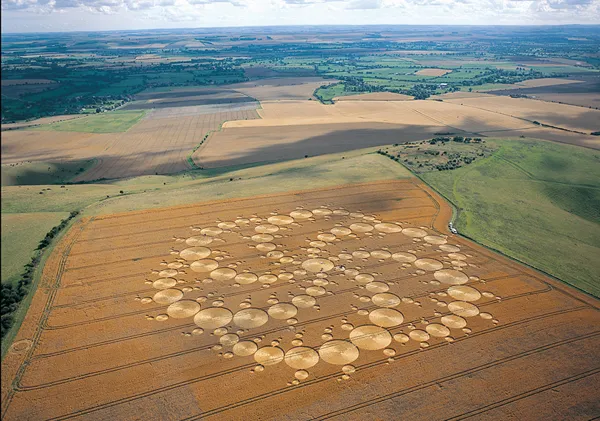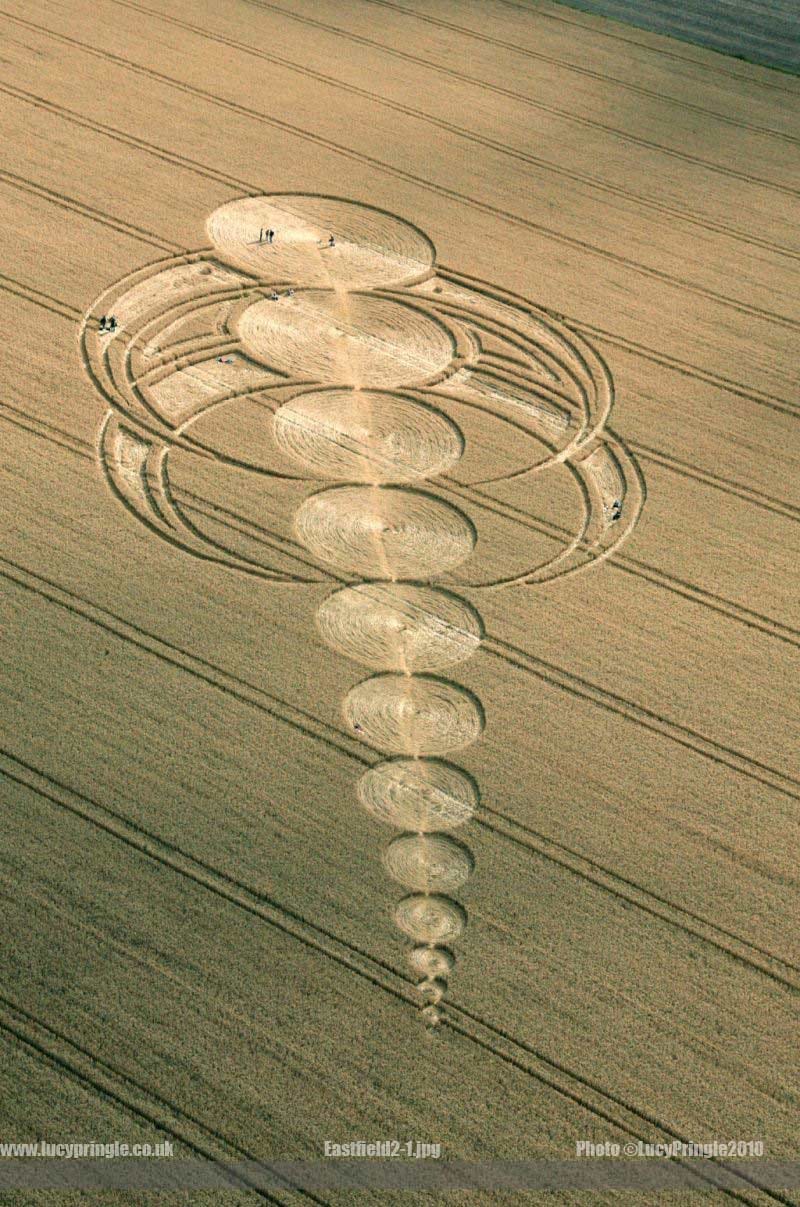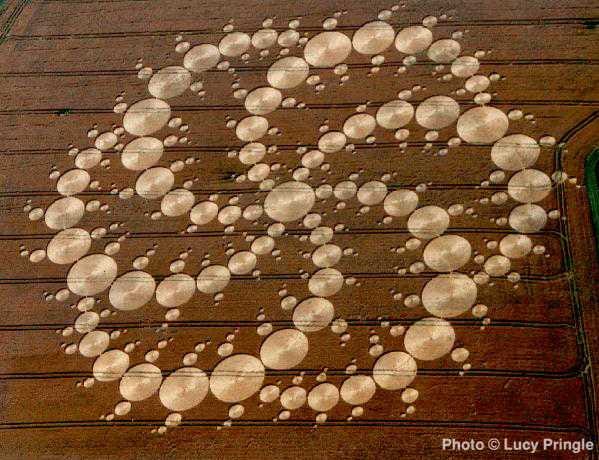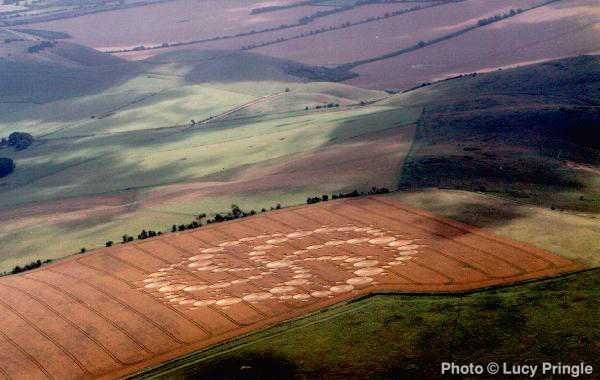by Arjun Walia, The Pulse:

When I say “complex” and “Intricate works of art,” I am referring to just that. Documented designs that have appeared in crop fields all over the world continue to bewilder and perplex researchers.
They truly make one question the nature of reality, and how little we know about our world.
If these designs are indeed hoaxes, then the makers have obviously succeeded in capturing the attention of the world in a way that not many works of art ever achieve.
TRUTH LIVES on at https://sgtreport.tv/
This article will use a few examples to explain what makes these formations so interesting and mysterious to those who study them and will explore the leading theories in the field.
What Makes Them So Mysterious?
There are two main factors that have made these formations so mysterious, the designs and the way they are made. These two factors alone desperately beg the question, who has the technology to create them?
What most people don’t know about complex crop circles is the fact that there are differences between circles where plants are broken by what is clearly some sort of mechanical action, and those where some form of energy has exploded the nodes in the stalks, which causes them to fall over in a particular way.
It’s not conclusively known how this is done, but the effect has been replicated by highly localized microwave heating. This type of technique causes water inside the stalk to vaporize and dislodge. As a result, the stalk flops completely over to one side.
Which ones are made by humans? I’ll leave that up to the reader to decide. But we will get to some examples that show some interesting plant abnormalities.

What Science Has Uncovered: Strange Plant Abnormalities
During the 1990s, multiple specific plant abnormalities were repeatedly documented in several hundred different crop formations that occurred in North America and several European countries.
In-depth laboratory examination of thousands of these crop circle plants and their controls by American biophysicist W. C. Levengood discovered the presence of consistent changes in the circle plants which were not present in the control plants (plants taken at varying distances outside the crop formations, but in the same fields). These are changes which control studies revealed could in no way be caused by simple mechanical flattening of the plants (with planks, boards, cement rollers or human feet).
It was discovered that these changes could only be replicated in a lab using sophisticated technology.
The most consistent alteration in cereal crop formations takes place within anatomical structures known as stem pulvini, or growth nodes. In the majority of cases, the nodes on the formation plants are expanded relative to normal.
Intriguing, isn’t it? These changes can occur with certain directed energy methods which some experts believe are caused by classified military weapons testing, specifically directed energy weapons. We’ll get to that later.
A detailed 1999 study published in Physiologia Plantarum titled “Dispersion of energies in worldwide crop formations” by Levengood and colleagues examined expulsion cavities in corn with exploded nodes.
It notes:
“The findings reported here lend further support to a decade of research which suggests that over 95% of worldwide crop formations involve organized ion plasma vortices that deliver lower atmosphere energy components of sufficient magnitude to produce significant bending, expansion and the formation of unique expulsion cavities in plant stem pulvini, as well as significant changes in seedling development. Here we demonstrate that, in a number of formations, quantitative node alterations can be directly related to fundamental concepts of electromagnetic energy absorption...In addition, we demonstrate that details of flattened, intertwined crop patterns can be described by the application of fluid dynamic principles governing the interaction of rectilinearly moving vortex pairs.”
Access the full paper here.
In 1994, Levengood published a paper titled “Anatomical Anomalies in Crop Formation Plants” explaining the following,
“Plants from crop formations display anatomical alterations which cannot be accounted for by assuming the formations are hoaxes. Near the soil surface the curved stems often form complex swirls with ‘vortex’ type patterns. In the present paper, evidence is presented which indicates that structural and cellular alterations take place in plants exposed within the confines of the ‘circle’ type formations, differences which were determined to be statistically significant when compared with control plants taken outside the formations. These transformations were manifested at the macroscopic-level as abnormal nodal swelling, gross malformations during embryogenesis. and charred epidermal tissue. Significant changes in seed germination and development were found, and at the microscopic level differences were observed in cell wall pit structures. Affected plants also have characteristics suggesting the involvement of transient high temperatures”


To summarize, there are four scientifically-documented visible plant changes which are hallmarks of genuine crop circles.
- Elongation or stretching of the apical node (the first node beneath the seed-head), as compared to the control nodes.
- Expulsion cavities (holes blown out at the nodes, usually found in the 2nd and/or 3rd nodes beneath the seed-head), as compared to control plants at various distances away from the formation.
- Distinct bending of plant stems, at the nodes, which can occur at any or all of the nodes




